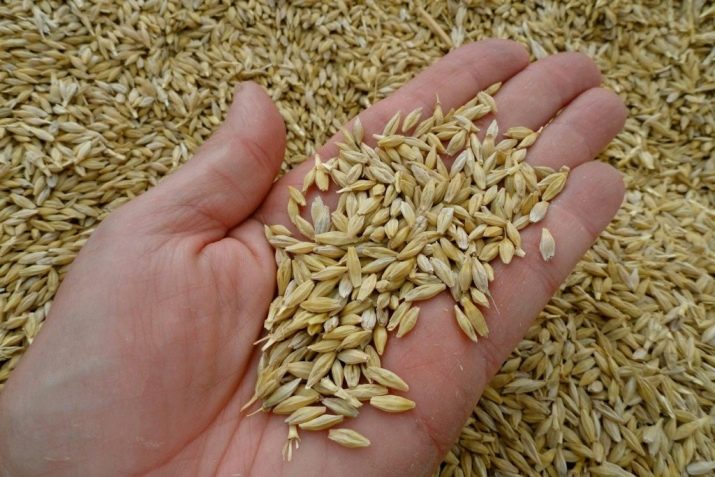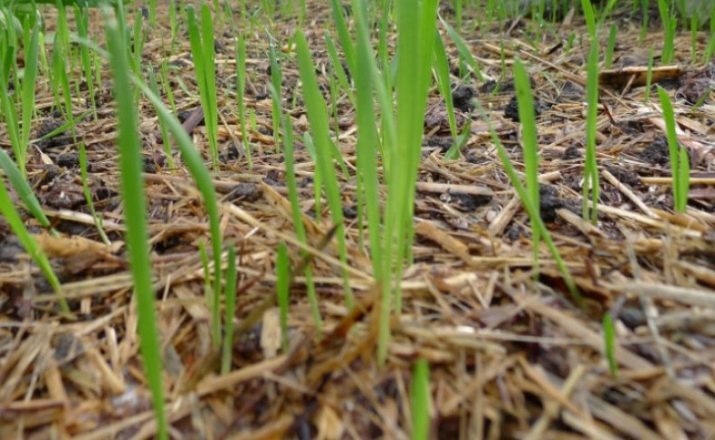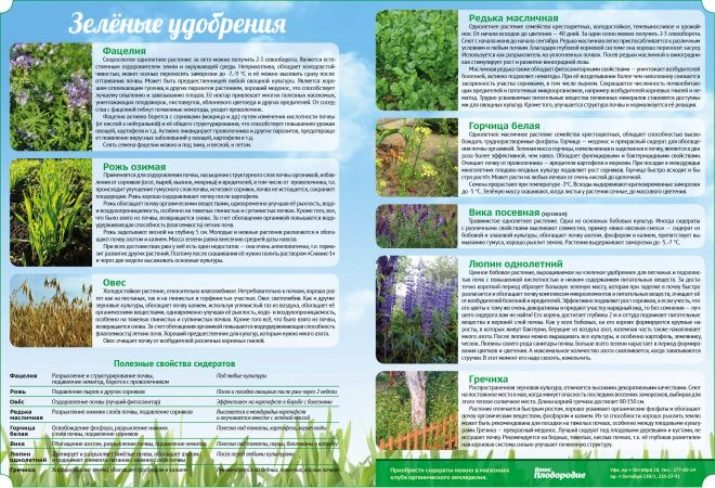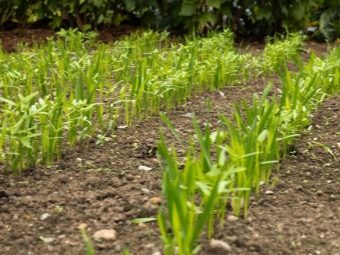Oats as siderat: features of use and cultivation
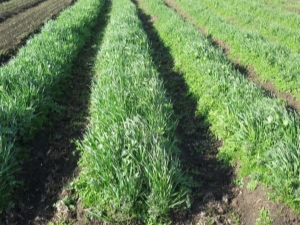
Rarely there is a farmer, in the "career" of which there would be no attempts to use the techniques of organic farming. And rightly so, because organics is the best fertilizer. However, things do not always go as planned. The point is banal ignorance of the simplest and very effective method of work.
Special features
The first association with organic farming is constant, tireless work with significant amounts of compost. It seems that it is not possible to do this otherwise, and that it is much easier to abandon your intention. But the usual way in which significant amounts of fertilizers synthesized in factories are applied creates a product of questionable utility.
The real alternative is the use of siderats, which are much more effective than compost, improve the soil and require much less time and effort. The bottom line is that in spring you will have to plant special technological cultures in which a powerful root system is harmoniously combined with a juicy green part.
As a sideratov, you can plant a variety of crops: mustard and rye, oil radish, buckwheat, clover. The mechanism of work is that specially selected plants improve the mechanical structure of the soil, and also add to it:
- nitrogen;
- phosphorus;
- potassium.
Why is oats recommended as siderat?
The popularity of this grass in the difficult task of increasing fertility increases from year to year. Its undoubted advantages are:
- ease of germination;
- unpretentious landings;
- ease of farming;
- saturation of the earth;
- inhibition of soil erosion;
- limiting the development of weeds.
Therefore, it is oats among the siderats that gardeners with experience and agronomists in large agricultural companies equally often choose. Dense vegetative part quickly gains the necessary condition. Oats are better than rye to cope with the spread of weeds and other plants that readily grab crops. The improvement of the mineral composition of the earth is achieved without any risk to the environment, in contrast to the use of ready-made fertilizers.
As has been shown by repeated botanical experiments, the areas occupied by cereal siderata are capable of preventing the harmful effects of wind and intense precipitation.
Additional advantages of oats as a siderata (characteristic, however, of all cover crops) are:
- support of positive microorganisms;
- increasing the permeability of land for incoming moisture;
- increase in microscopic ventilation of land.
What else needs to be considered?
Speaking about the features of sideratny cultures, it is important to consider that there is no universal type. Moreover, with all diligence, breeders will never withdraw it. After all, soils differ in acidity, in mechanical structure, and in other characteristics. Requirements for improving the land for each plant, and sometimes for each individual variety may vary significantly. And then there is the individual compatibility or incompatibility of each siderat with certain field crops.
All cereal siderats, including oats, also have certain disadvantages. Incompetent use of them can disrupt the balance of trace elements in the ground or increase the likelihood of disease in the target culture.
Of course, the positive aspects of oats will be:
- suitability for development on poor soil;
- the ability to survive hypothermia and even excessive shadow;
- seed density;
- price availability of seed;
- no sophisticated requirements for growing;
- the conversion of complex phosphorus compounds into simpler ones that are available to various plants;
- effective feeding of soil with phosphorus and potassium.
The weak point of oats is that after it is bad to grow other cereals (due to the general composition of harmful insects). A negative result can be given and the subsequent planting of potatoes.Soil preparation for it will be normal, however, it is likely that the wireworm, parasitizing on both cultures, will be affected.
An insufficient amount of green mass, as well as a small introduction of nitrogen (largely compensated by the skillful use of combinations of oats with other green manure), can cause problems. Also remember that the culture requires substantial watering; it suffers badly from the heat due to weakness of the roots.
Agrotechnology
In order to achieve an optimal result in the next year in the summer and autumn, it is necessary to use a strictly defined amount of seed. The average rate - 2 kg per 0.01 ha. But this figure can be reduced or grow, taking into account the characteristics of the soil and the concentration of nutrients in it.
The usual recommendation from professional agronomists is to plant oats in the first half of September. It is extremely important to get ahead of the beginning of frosts, and if they can come unusually early, it is better to sow more quickly.
When oats are sown in spring, they also focus on actual weather. Typically, in the southern regions allowed to scatter seeds across the fields in the last days of February. For summer residents of a moderate strip, it is advisable to wait until the warm days begin in spring. Judging by the reviews, you can sow oats even without the use of complex machinery. Important: this rule applies only to summer residents, for large agricultural enterprises such a question is automatically removed.
In any case, the seeds are pre-cooked, the ground is also required to be processed - to make it even and loosen. The seeds densely covering the ground in the garden or at the cottage are buried with a rake and watered. To introduce green manure seeds is required a maximum of 20 mm. After all, they must ascend quickly and then quickly give a result. The long delay of oats at the site during the season contradicts the very essence of the business started.
Mowing overgrown siderata required before its heyday. Independent sowing of yourself by this crop should be excluded. But the digging of land in the fall is at the discretion of summer residents. Sometimes plants are simply cut and thrown on the surface to form a layer of humus. To bury the green manure crop will necessarily have to saturate the earth with minerals, and in those cases where there is a high risk of wind and water being carried away. Competent sideration frees you from tedious mulching, organic dressing and weed throughout the season, without returning to synthetic fertilizers.
additional information
Whether oats are used by themselves or in association with other green manure has no effect on the overall density of the landing. Shoots should grow a powerful group, literally a wall. With spring planting, plantings will have to be cut off 14 days before the main plant is planted. But in the fall, siderats are planted only after the harvest. If individual plants have time to give shoots, they do not mow.
It is possible to apply organic feed of the earth at the expense of culture of oats for adjustment of low indicators of the earth on:
- copper;
- zinc;
- gland;
- magnesium;
- manganese;
- sulfur;
- B vitamins
Oats contain solid portions of essential oils and phytoncides, which effectively prevent the development of microscopic organisms of fungal and bacterial species. It is especially good to use oats as a siderat in front of tomatoes and blackberries, sweet peppers and raspberries, currants and zucchini, physalis and strawberries. Also, good results after it gives a strawberry. If the seedlings do not appear for a long time, it is allowed to feed with nitrate or superphosphate. Other support cereal is not needed.
It is possible to intensify growth, if you cut sprouts when reaching a height of 150-200 cm. If you plan to put a green mass in the ground, you should pour it with a substance that accelerates the decomposition of organic matter. Before planting it is very important not only to loosen the ground, but also to clear it of debris. Past standard dressing oat seeds in half with washed and sifted sand scatter uniform layer.Most often, the interval from sowing to mowing is approximately 45 days (taking into account weather conditions, the characteristics of the land and the development of the plant itself).
Excess siderata collected and moved into the pit for compost. The main advantage of oats is abundant saturation of the earth with potassium; but it is important to remember that young shoots contain 200-400% more than late greens. Such a feed on the development of peppers and eggplants is especially good. Among related cultures, legumes show the best compatibility, and among them Vika is in the lead. Sour peatlands are recommended for oats, but it grows slightly worse on sand and in salt marshes. An important advantage of the siderata can be considered the improvement of the type of land, which will not seem "naked" to the shoot of other cultures.
For more information on growing oats as a siderata, see the video.



